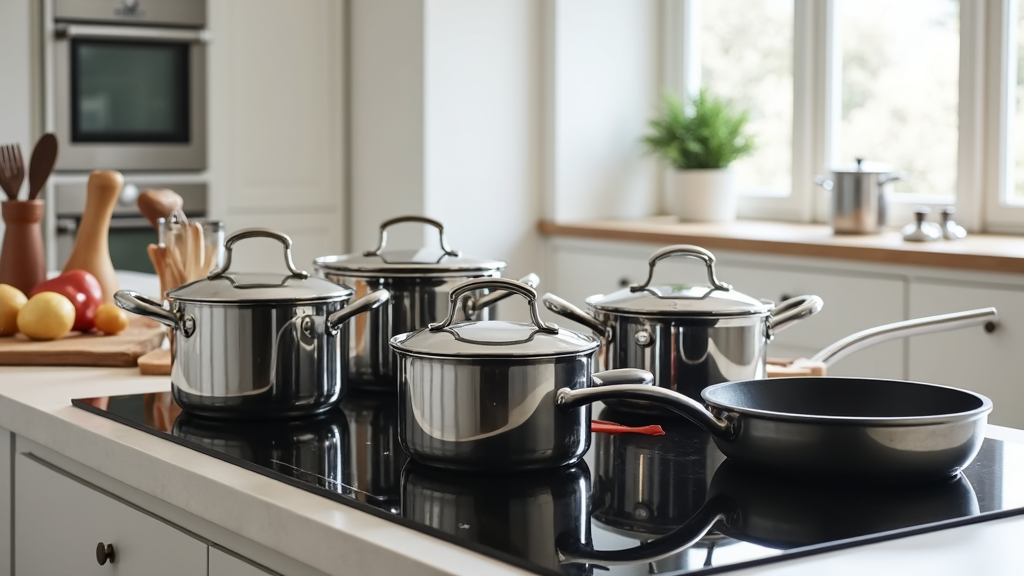
If you’re shopping for cookware that works on an induction cooktop, you might notice how many options exist, all with different materials and price points. Picking the right cookware set can really improve your cooking experience and help you get the most from your induction stove.
Induction cooktops use a different heating method than gas or electric ranges. They rely on magnetic fields to transfer heat directly into the cookware. This means not all pots and pans work for induction. I’ve spent a lot of time cooking on induction surfaces and testing cookware. Through plenty of research and hands-on use, I’ve learned what to look for in a really good induction cookware set. If you’re not sure what makes a pan “induction-ready” or just want to upgrade your kitchen, this guide will help you sort through your choices.
This article will explain how induction cooking works, the types of cookware that are best, and some top picks for different budgets and cooking needs. You’ll learn what features actually matter when deciding on a set, and I’ll share personal tips that make choosing easier.
Understanding Induction Cooking and Why Cookware Matters
Induction cooktops don’t use open flames or exposed heating coils. Instead, they use electromagnetic energy to heat pots and pans directly, skipping the need to heat up a burner first. For this reason, only cookware made from magnetic materials will work on induction. A simple test at home is to use a fridge magnet. The pan is induction-compatible if the magnet sticks firmly to the base.
Common induction friendly materials include stainless steel (with a magnetic base) and cast iron. Some multilayer or “clad” pans designed for induction also work well. Aluminum and copper by themselves don’t work unless the manufacturer adds a magnetic base.
If your cookware isn’t compatible, it won’t heat up at all on an induction stove. Choosing the right set means you’ll avoid disappointment and get the best results in the kitchen.
What to Look for in the Best Cookware for Induction Cooktops
Key Features and Materials
- Material: Stainless steel with an aluminum or copper core provides even heating and durability. Cast iron also works well, especially for slow cooking and searing.
- Base Design: The pan bottom must be perfectly flat and magnetic. Warped or uneven bases can cause poor heat transfer or rattling sounds.
- Oven Safety: If you use your cookware in the oven, check the handles and lids are oven safe to your desired temperature.
- Ease of Cleaning: Some sets are fully dishwasher safe. Nonstick coatings can make cleanup easier but might not last as long with frequent use.
- Set Size: Think about how many pots and pans you actually use. Buying huge sets can seem appealing, but most home cooks use only a few favorite pieces regularly.
I always check for a heavy, well balanced feel and secure handles. Lids that fit snugly are also a nice bonus, as they help lock in heat and moisture.
Pros and Cons of Popular Cookware Materials
- Stainless Steel
-
- Pros: Durable, resistant to stains and rust, often dishwasher safe, doesn’t react with food.
- Cons: Basic stainless pans can have hotspots unless they include a layered base with aluminum or copper.
- Cast Iron
-
- Pros: Excellent at retaining heat, works for everything from searing to baking, lasts for decades if cared for.
- Cons: Heavy, requires seasoning, can rust if not dried after cleaning. Enameled cast iron is easier to care for but costs more.
- Nonstick
-
- Pros: Makes cleanup easy, good for eggs and delicate foods.
- Cons: The nonstick coating can wear down over time, and many nonstick pans are not oven safe above certain temperatures.
If your priority is easy care, nonstick can be a good pick, but I prefer stainless steel or enameled cast iron for long term value and performance.
Top Induction Cookware Set Recommendations
Best Overall: AllClad D3 Stainless Steel 10Piece Set
AllClad’s D3 line has become the gold standard for serious home cooks and pros. I like it for its even heating, comfortable handles, and super flat bases. The D3 set includes two fry pans, two saucepans, a sauté pan, and a stockpot. It covers just about any recipe I’d want to make, from pan sauces to stews. Since it’s dishwasher safe and oven safe, it fits into busy everyday cooking easily.
- Material: Stainless steel with an aluminum core
- Dishwasher/Oven Safe: Yes, up to 600°F
- Durability: It holds up to heavy use and looks good year after year
If you want fewer pieces, AllClad’s smaller sets are available too, keeping the same quality with a lower price tag.
Best Value: Cuisinart Multiclad Pro 12Piece Set
Cuisinart’s Multiclad Pro series performs almost as well as premium brands but sells for less. It features triple ply construction with a magnetic steel outer layer, so it works perfectly on induction. The set includes three saucepans, two skillets, a sauté pan, and a stockpot plus steamer. I find it great for someone outfitting a kitchen on a midrange budget who still wants dependable performance.
- Material: Stainless steel with an aluminum core
- Dishwasher/Oven Safe: Yes, oven safe up to 500°F
- Lid Options: Includes stainless steel lids for all pots and pans
Best Nonstick Set: Tfal Ultimate Hard Anodized
If nonstick is more your style, the Tfal Ultimate series stands out. The pans have a magnetic stainless steel base for induction use and a strong nonstick coating that stands up to lots of scrambling and frying. Included are two fry pans, three saucepans, a sauté pan, and a Dutch oven, which suit most daily meals at home. I’ve had a set like this and love how simple it is to clean, especially after breakfast foods and sticky sauces.
- Material: Hard anodized aluminum with magnetic stainless steel base
- Dishwasher/Oven Safe: Dishwasher safe; oven safe to 400°F (lids to 350°F)
- Notes: Not for super high heat oven roasting but great for stovetop and baked casseroles
Best for Small Kitchens: Tramontina TriPly Clad 8Piece Set
Smaller apartments or homes might not need a dozen pots and pans. Tramontina’s 8piece set focuses on essentials—two frying pans, two saucepans, a Dutch oven, and lids. The triply construction ensures even heating, and they look sharp. I’ve recommended this set to friends just starting out and those who want quality without crowding the cabinets.
- Material: Stainless steel with aluminum core
- Dishwasher/Oven Safe: Yes, oven safe to 500°F
- Design: Sleek, straightforward, and hard to go wrong
Top Pick for Cast Iron: Le Creuset Signature Enameled Set
For those who want cast iron’s heat retention and versatility but without the extra care of seasoning, Le Creuset’s enameled pieces deliver. Their signature set offers a Dutch oven, skillet, and saucepan, all induction compatible. I use my Le Creuset Dutch oven for bread and stews regularly. The enameled finish resists sticking and rust while adding a big pop of color to your kitchen.
- Material: Enameled cast iron
- Dishwasher/Oven Safe: Yes, oven safe to high temps
- Heaviness: These pieces are on the heavier side but last for generations
Feature Comparison: What Really Matters for Induction Cookware
- Magnetism and Flatness
Why it’s important: A strong magnetic base with a super flat surface ensures better, more even heating. I always check with a magnet and run my hand under the pan to make sure it’s flat before buying. - Overall Heating Performance
Why it’s important: Cookware should heat up evenly with no hot or cold spots. I look for multilayer designs that include aluminum or copper cores, which boost performance for sauces and delicate dishes. - Durability and Care
Why it’s important: You want cookware that lasts through daily use and regular cleaning. I check if the pieces are dishwasher safe and whether handles feel solidly attached. - Nonstick vs. Stainless vs. Cast Iron
Why it’s important: Nonstick makes cleanup easy, but stainless steel is better for browning and searing. Cast iron is hard to beat for slow cooking and bread baking. It depends what kind of cooking you do most often. - Set Size and Storage
Why it’s important: Many sets include extra pieces that rarely get used. I focus on versatile shapes that I know will actually come off the shelf, like a good sauté pan or a 3quart saucepan.
User Reviews and Brand Reputation
- AllClad & Le Creuset: Known for fantastic build quality and customer service. Home cooks and professionals often mention how their sets last for decades.
- Cuisinart & Tramontina: Praised for great performance at a more affordable price. Many users comment about reliable cooking results and easy cleaning.
- Tfal: Gets positive feedback for value and nonstick performance, especially from families who want hassle free cleanup day after day.
It’s helpful to look at reviews that mention years of regular use. I also check for comments about warping, sticking, or handles coming loose, as those are signs a set might not be built to last.
My Personal Tips for Buying Induction Cookware
- Always check for a warranty. Most quality sets offer at least a limited lifetime guarantee.
- If you’re on a tight budget, start with one great pan (like a skillet or saucepan) that you’ll use every day and build out your set over time.
- Heavy isn’t always better, but a little weight in the base usually helps with heat distribution.
- Test how the handles feel in your hand, and if lids are balanced and easy to grip.
- If you’re unsure, visit a store and pick up the display model. Feeling the pans in person often helps make the decision easier.
Which Cookware Set Should You Get for Your Induction Cooktop?
The best induction cookware set for you depends on your cooking habits, kitchen space, and budget. Here’s a quick breakdown:
- Choose AllClad if you want lasting performance and don’t mind paying for quality.
- Pick Cuisinart if you want reliability without the high price tag.
- Go with Tfal for nonstick convenience, especially for breakfast and quick cleanups.
- Select Tramontina if you need a basic, smart set for a smaller home.
- Invest in Le Creuset if you want classic cast iron that’s beautiful and built to last.
Getting the right induction cookware set isn’t just about picking the biggest or fanciest set. It’s about finding what makes cooking easier and more enjoyable for you. Careful research helps buyers make informed decisions. Thinking about your own kitchen routines goes a long way. If you want to get a feel for the cookware, don’t hesitate to visit a store and handle the pans before you buy. Also, factor in your favorite dishes and how often you truly use each type of pan—sometimes a simple two pan combo is more valuable than a huge set. Finally, remember that investing in the best induction cookware you can afford now will pay off over years of enjoyable, hassle free cooking.
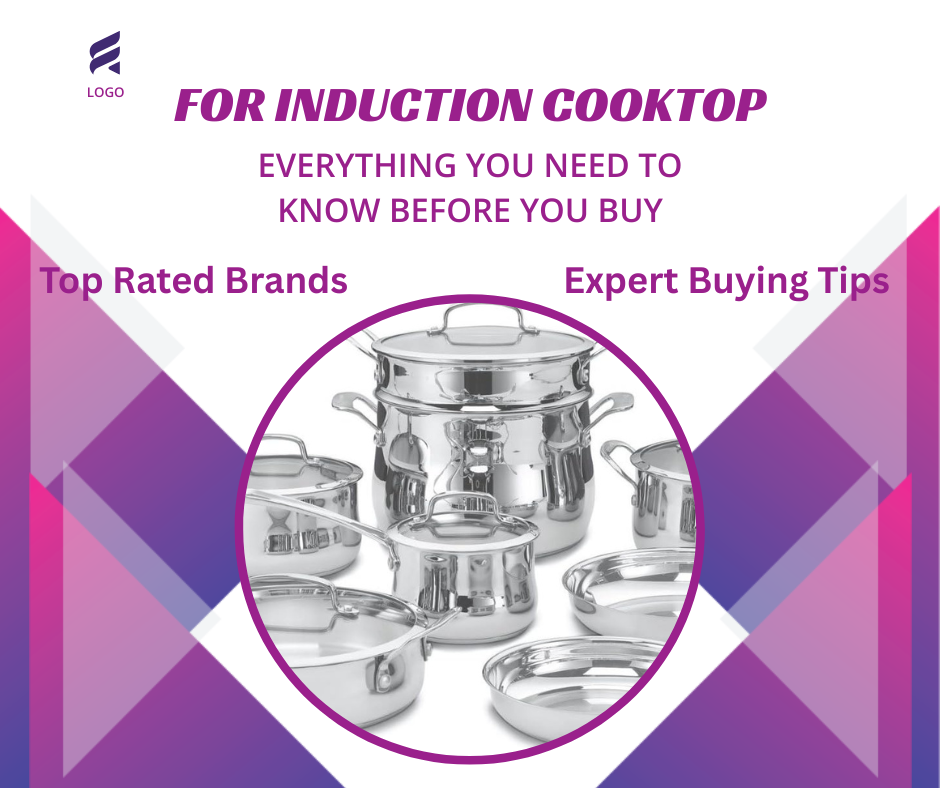
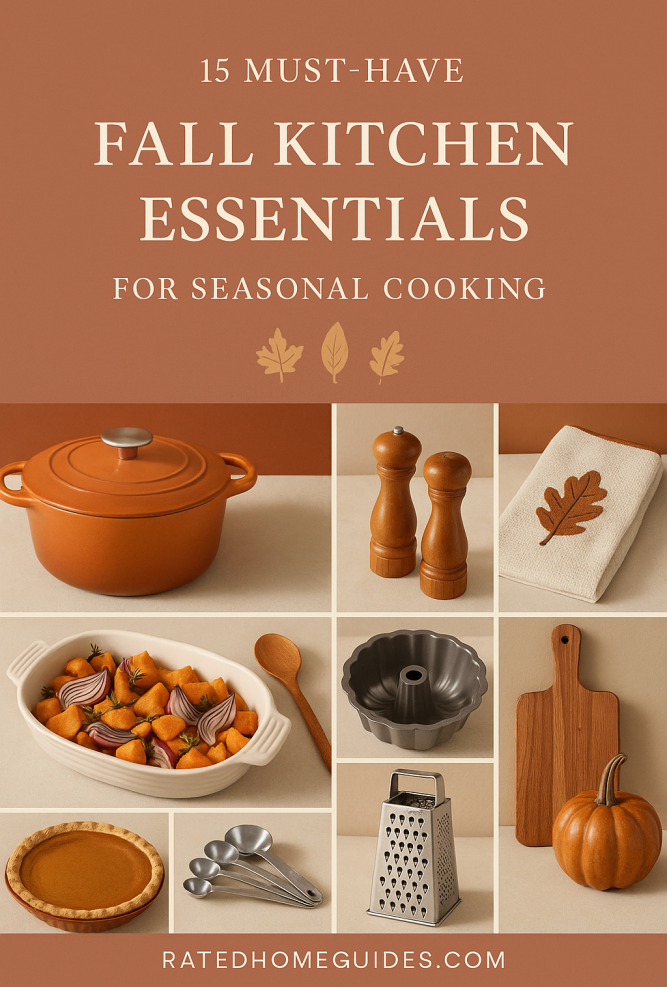
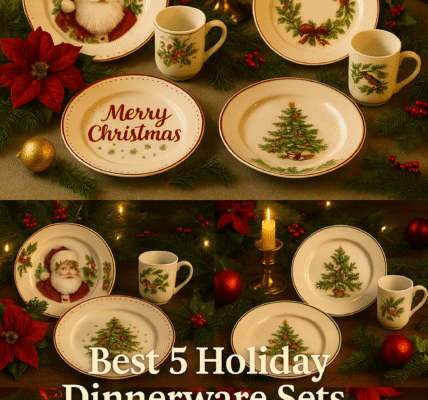
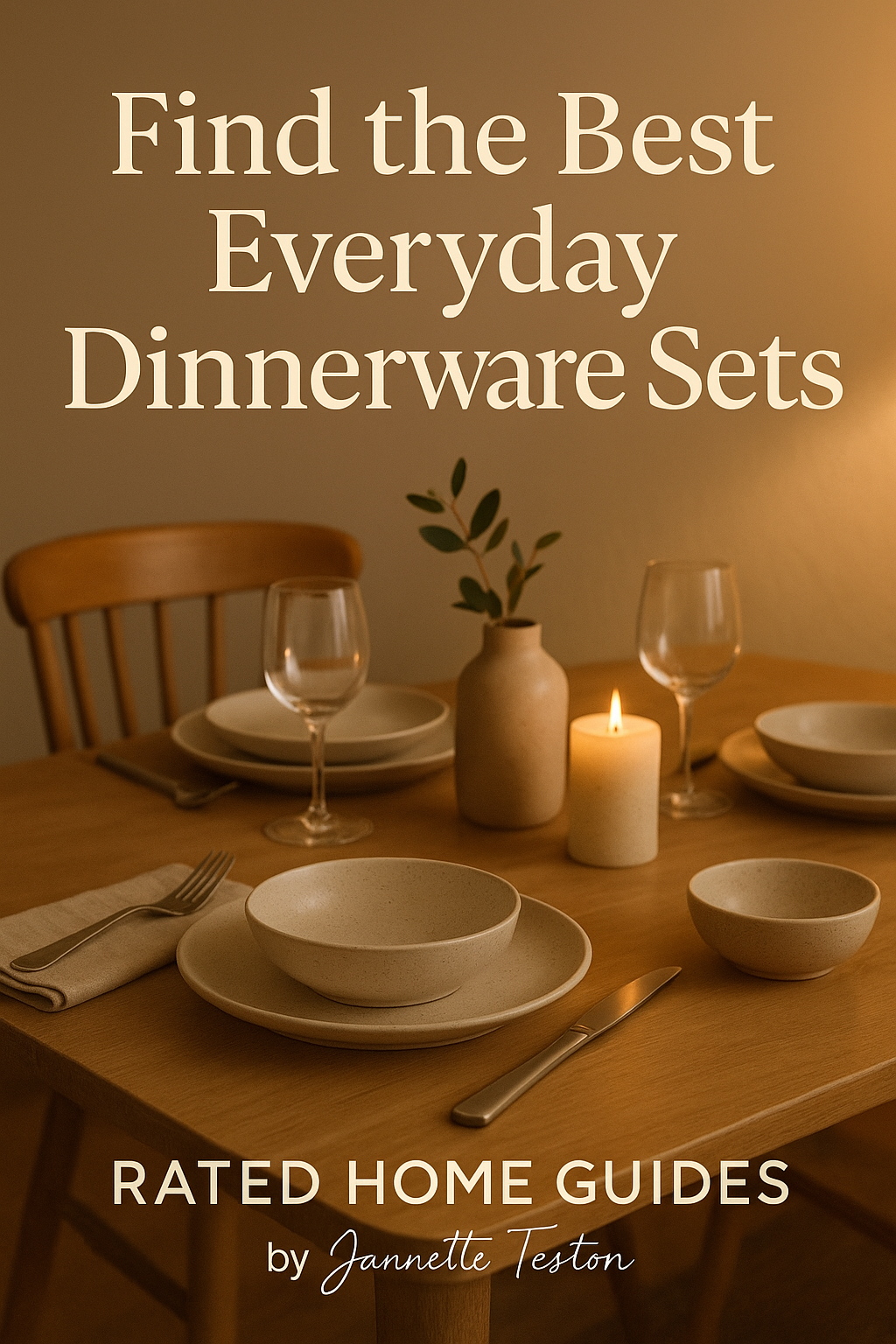

Induction cookware is a game changer in the kitchen, but it really demands careful selection. The efficiency and precision of induction cooking are only as good as the compatibility of the pots and pans used. Materials like stainless steel with an aluminum core seem to offer the best balance of durability and heat distribution. It’s also interesting how some people overlook the importance of a perfectly flat base, which is crucial for full contact with the cooktop surface. In my experience, investing in high-quality induction-compatible sets makes a noticeable difference in both cooking results and long-term reliability.
You nailed it—induction cooking really is a game changer, but only when paired with the right cookware. That point about a perfectly flat base is so important and often overlooked! Without full contact, even the best induction cooktops can struggle with uneven heating or power cycling, which totally defeats the purpose of that precision.
I completely agree about stainless steel with an aluminum core—it’s such a great combo for everyday cooking. You get the durability of steel plus the quick, even heat from aluminum. Brands that invest in multi-layer construction (like tri-ply or 5-ply) really shine here.
Investing in quality upfront definitely pays off in both performance and longevity. I’ve had readers mention how switching to a better set actually made them enjoy cooking more because things just turned out better, faster, and with less frustration.
Thanks so much for adding your insight—it really helps round out the conversation for others considering the switch to induction. ????
???? If you have any favorite sets or go-to brands, feel free to drop them here—I’d love to include more reader-tested recommendations in future updates to the guide!
There is and old saying that ” you learn something new everyday” and for me I did not know about induction counter-tops but it seems really fascinating how these stoves work if I can use that word and the specialized cook ware that you need prepare meals. Thanks so much for the breakdown of what needs to happen when using induction counter-tops for cooking your guide is a great help.
Hello Norman, yes I heard that saying many times learn something new every day. Your welcome for the detailed guide on Cookware Set for Induction Cooktops.
Janette
I like the way the article emphasises the magnet test, simply seeing if a magnet sticks to the bottom of your pan, to check induction compatibility. It’s a quick, no-fuss trick that really works and saves you from buying unnecessary gear.
Ultimately, Rated Home Guides, gives a solid overview it is simple, clear, and effective. But have you considered digging a bit deeper? Maybe exploring specific tested sets to help customers and reviewers to fine-tune choices based on your cooking style, budget, and preferences.
I am also curious if any of those specific brands or sets catch your eye?
Kind regards,
Martin
Hello Martin, I have tested many induction cookware sets and am working on more in-depth reviews for induvial brands of induction cookware. T-fal I didn’t like to much, the Allclad is my favorite cookware.
This was such a helpful and thorough guide, Jannette! I’ve been using an induction cooktop for about a year now and totally agree how important it is to pick the right cookware—it really does make a huge difference in performance and even energy efficiency.
I’ve mostly been using stainless steel pans so far, but I’ve been curious about incorporating a few nonstick pieces for things like eggs and delicate fish. Have you found any nonstick induction pans that hold up well over time without the coating wearing off too quickly?
Also, I noticed you mentioned cast iron as a great option for induction. I love the idea of enameled cast iron like Le Creuset, but I’m a bit worried about the weight, especially when lifting heavy pots full of stew. Do you think the benefits outweigh the heaviness for everyday cooking, or would you reserve cast iron for special meals?
Thanks again for sharing all these insights—it definitely makes navigating the world of induction cookware way less overwhelming!
Thank you so much for your kind words—I’m really glad you found the guide helpful! It’s always great to hear from fellow induction cooktop users who understand how much the right cookware can impact your whole cooking experience.
For nonstick pans, I totally get what you mean—eggs and flaky fish practically require that easy-release surface. I’ve personally had good luck with nonstick induction-compatible options from All-Clad (especially their HA1 line) and GreenPan’s Valencia Pro collection. Both hold up surprisingly well if you stick to medium heat and use soft utensils. That said, like all nonstick, even the best ones eventually need replacing—but these have given me solid mileage compared to others.
As for enameled cast iron like Le Creuset, yes—it’s amazing on induction, and I do think the benefits are worth it, especially for dishes that require steady heat like soups, braises, or sauces. But I totally hear you on the weight! For everyday cooking, I actually alternate between a smaller enameled Dutch oven and a lighter stainless sauté pan, depending on what I’m making. If lifting heavy pots is a concern, you might try enameled cast iron braisers—they’re a bit shallower and easier to handle but still retain heat beautifully.
Thanks again for reading and sharing your experience! If you ever test out new pieces or brands, I’d love to hear what you think—it helps all of us continue learning together in the kitchen. ????
???? And if you’re ever looking for more cookware tips or want to explore reviews of specific brands, feel free to check out the other guides on the blog or subscribe for updates—I’m always cooking up something new! ????